

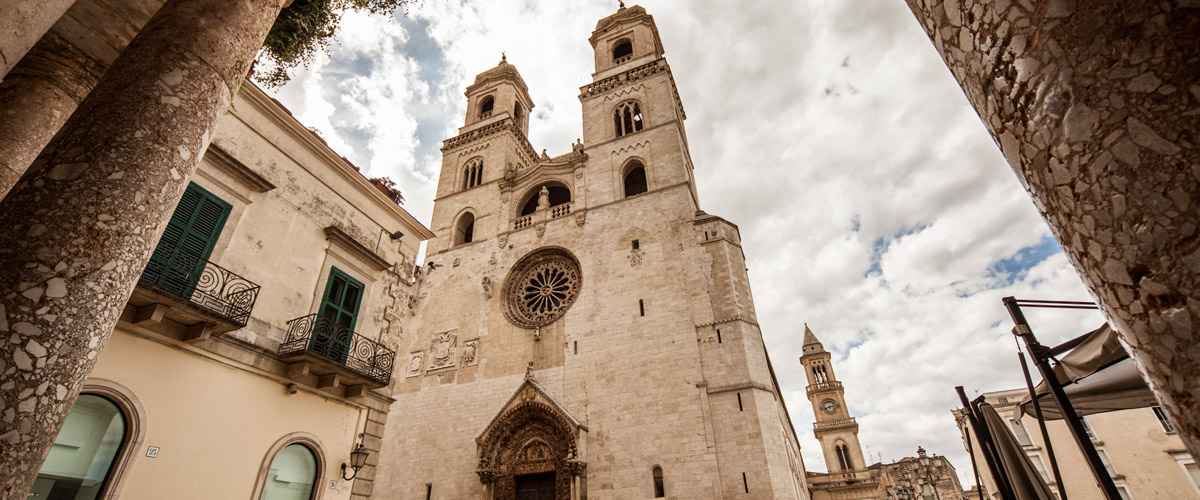


From some notarial documents of the city of Gravina of the beginning of the 13th century, it is clear that a small town called Murum existed in the area occupied by actual Altamura. Said toponym referred to the city walls (megalithic walls), whose ruins were visible in the Middle Ages and whose foundations are still visible in some areas today.
Altamura was therefore re-founded by Emperor Frederick II Hohenstaufen in the first half of the thirteenth century and in fact it could boast of having the only cathedral built by the emperor himself.
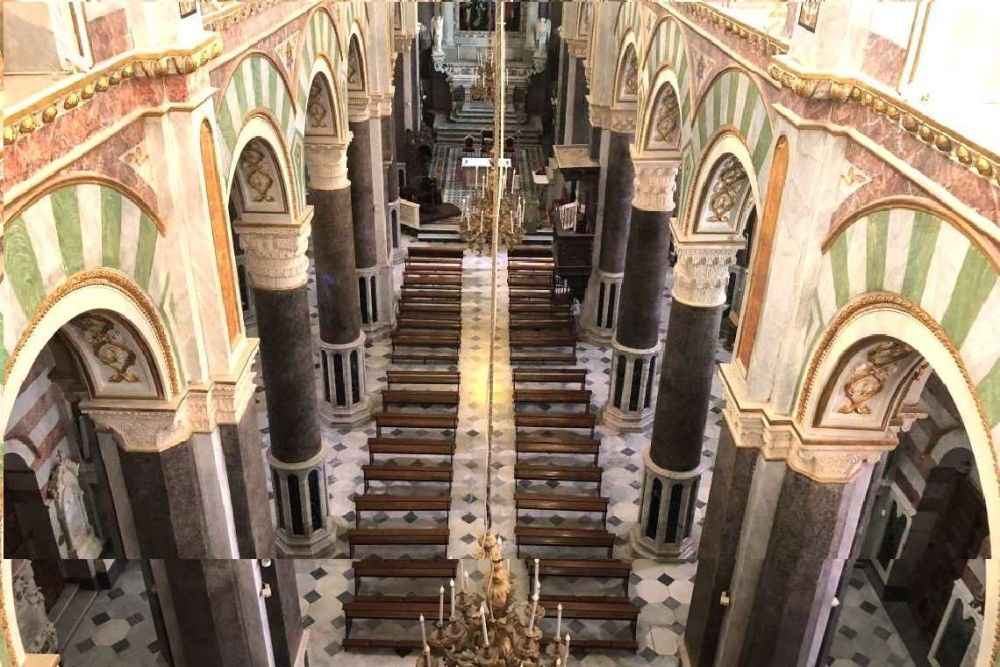
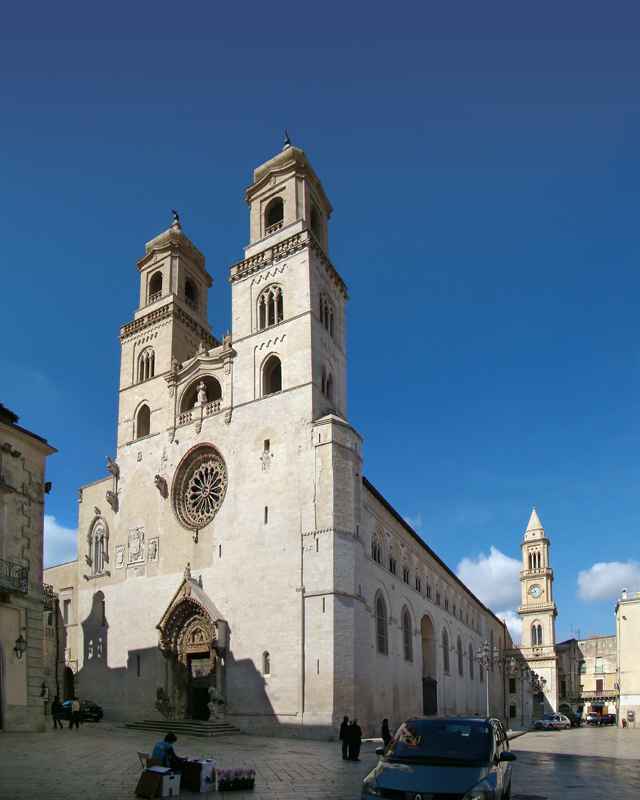 The cathedral of Santa Maria Assunta dates back to 1232, when the emperor Frederick II of Swabia built it by dedicating it to Maria Assunta and placed it under his patronage and his descendants. The orientation of the cathedral is reversed compared to the original facing toward Gravina in Puglia. The construction of the northern portal is related to the following Angevin period when it was opened onto the cathedral square. The construction of a second bell tower, the area of the altar and the current sacristy were added in the first half of the sixteenth century. Eighteenth-century works are instead the loggia between the two bell towers with the statues of the Virgin among the SS. Peter and Paul, the ends of the bell towers and the internal marble cladding. In evidence the two lions door-columns retouched by an artist from Andria, Maestro Antonio.
The cathedral of Santa Maria Assunta dates back to 1232, when the emperor Frederick II of Swabia built it by dedicating it to Maria Assunta and placed it under his patronage and his descendants. The orientation of the cathedral is reversed compared to the original facing toward Gravina in Puglia. The construction of the northern portal is related to the following Angevin period when it was opened onto the cathedral square. The construction of a second bell tower, the area of the altar and the current sacristy were added in the first half of the sixteenth century. Eighteenth-century works are instead the loggia between the two bell towers with the statues of the Virgin among the SS. Peter and Paul, the ends of the bell towers and the internal marble cladding. In evidence the two lions door-columns retouched by an artist from Andria, Maestro Antonio.
In addition to the monumental Romanesque-Apulian cathedral, Altamura can also boast the two beautiful churches of San Biagio and San Nicola dei Greci.
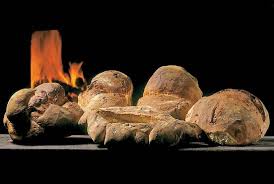 Altamura bread, with its classic skuanète (high) and low forms, received the DOP mark in 2005. Altamura bread is obtained by mixing the re-milled durum wheat semolina with water and natural yeast, called "mother yeast", which is obtained by fermenting a small quantity of bread dough previously prepared; everything is left to rest for a few hours and, respecting local tradition, it is cooked in wood-fired ovens at dawn to be present on the counters early in the morning. Altamura bread is produced only with wheat harvested exclusively from within a restricted area. Each form is guaranteed by the Protection Consortium.
Altamura bread, with its classic skuanète (high) and low forms, received the DOP mark in 2005. Altamura bread is obtained by mixing the re-milled durum wheat semolina with water and natural yeast, called "mother yeast", which is obtained by fermenting a small quantity of bread dough previously prepared; everything is left to rest for a few hours and, respecting local tradition, it is cooked in wood-fired ovens at dawn to be present on the counters early in the morning. Altamura bread is produced only with wheat harvested exclusively from within a restricted area. Each form is guaranteed by the Protection Consortium.
Traditionally, the bread was prepared by the housewives in their own homes (with weekly doses of several kg) and delivered to the bakers, who passing from house to house, took care of collecting the loaves. Before baking them at each loaf, the mark of each family that had prepared the bread was stamped and once cooked it was loaded onto a cart pulled by a mule and delivered back to each family.
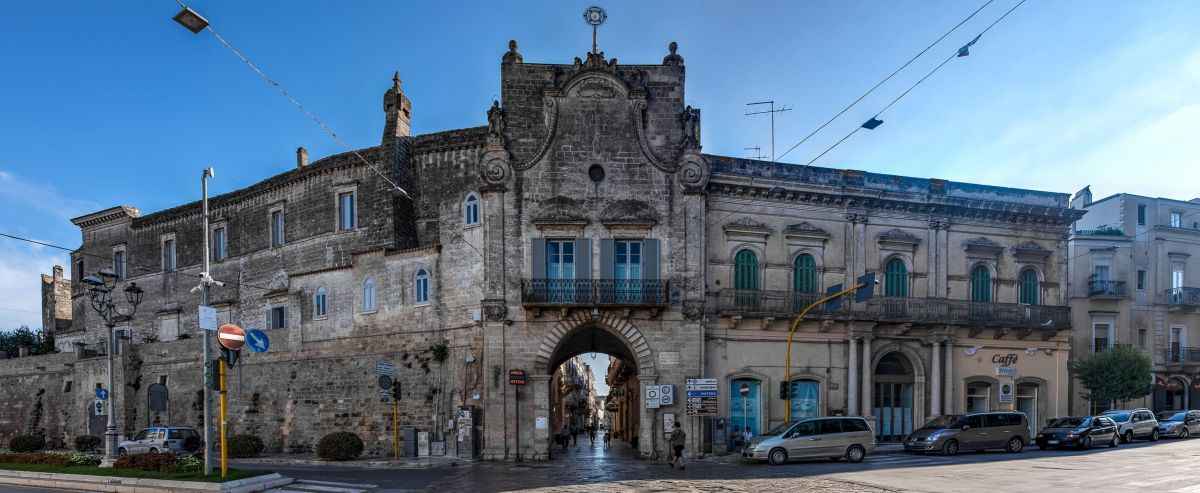
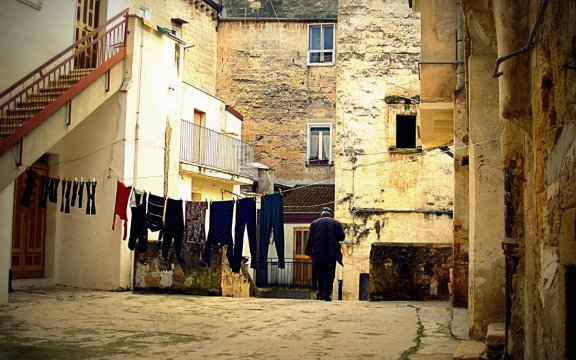 The claustri are typical large squares that open on the main streets of the historic center of Altamura. The local denomination is gnostre and they are unique in popular architecture. There are about 80 of them and they represent the at the time spontaneous aggregation of family or ethnic groups (Latins, Moors, Jews). Their conformation fulfilled not only a social function but also a defensive one: the claustro, with just one entry, constituted a defensive system that could prove lethal for the enemies who, if they had ventured in, could remain taken and easy target of stones, water or anything. There are two types of claustri: the Greek-style one with its rounded shape and a well or a tree in the center; the narrow and long Arab style one with a small closed road and at the bottom a well for rainwater. The most picturesque and characteristic are the cloistered Giudecca, Inferno, Tradimento. Many cloisters have been abandoned and therefore today are uninhabited and run down.
The claustri are typical large squares that open on the main streets of the historic center of Altamura. The local denomination is gnostre and they are unique in popular architecture. There are about 80 of them and they represent the at the time spontaneous aggregation of family or ethnic groups (Latins, Moors, Jews). Their conformation fulfilled not only a social function but also a defensive one: the claustro, with just one entry, constituted a defensive system that could prove lethal for the enemies who, if they had ventured in, could remain taken and easy target of stones, water or anything. There are two types of claustri: the Greek-style one with its rounded shape and a well or a tree in the center; the narrow and long Arab style one with a small closed road and at the bottom a well for rainwater. The most picturesque and characteristic are the cloistered Giudecca, Inferno, Tradimento. Many cloisters have been abandoned and therefore today are uninhabited and run down.
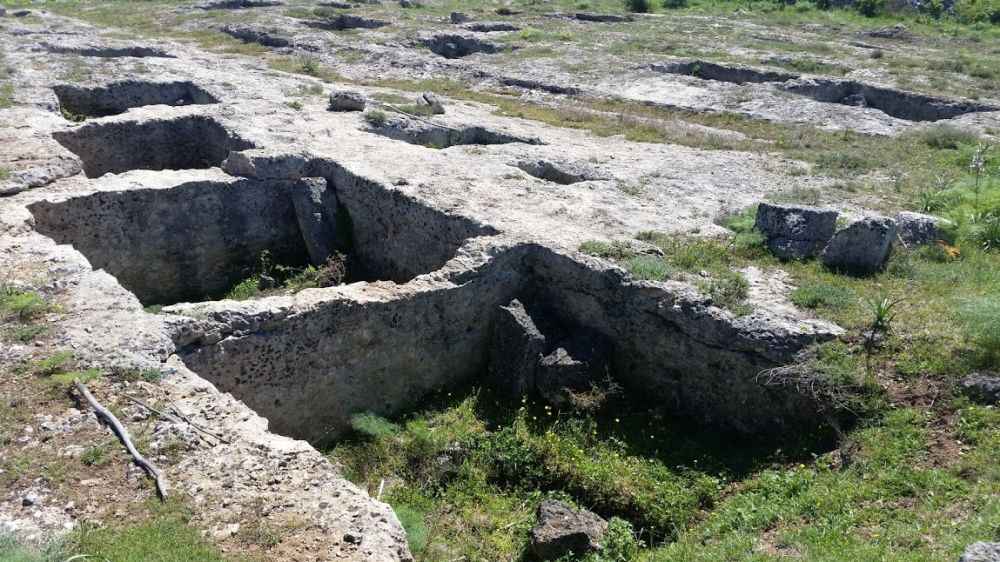
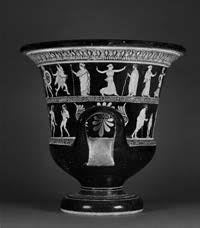
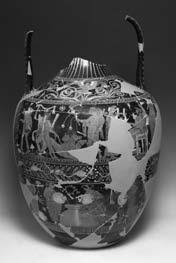
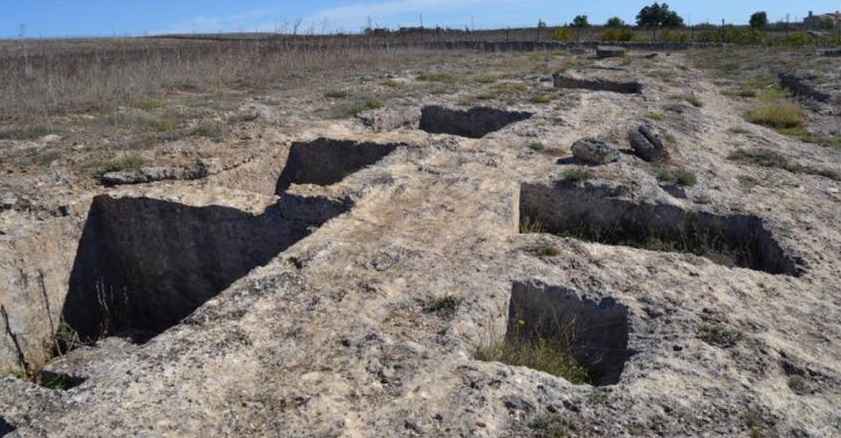
The Altamura area is the subject of frequent archaeological investigations that often lead to important findings (often attributable to the so-called Peucetians). Only a part of the archaeological finds has remained as local or national heritage, due to sometimes illegal marketing and consequent loss, well evidenced by eighteenth and nineteenth century authors and documents. Domenico Santoro, for example, states that at least until 1688 there were, on via Tarantina (via Carpentino), many funeral urns near a source called "Putida" (which retains that name). There is no trace of these urns, according to what reported by scholars Tommaso Berloco and Elena Silvana Saponaro. This confirms the existence of a sort of black market during the 19th century, and that the finds (vases, coins or medallions) were not sufficiently protected. Pietro Viti also provides detailed information on these findings. Cesare Orlandi speaks of archaeological finds both in the vicinity and within the perimeter of the megalithic walls of Altamura.





The National Archaeological Museum of Altamura is located close to the historic center of the city, in the locality of La Croce, an archaeological area of great importance, rich in evidence from the ancient Bronze Age up to the advanced Hellenistic age and preserves finds belonging to the prehistoric, archaic, classic period, Hellenistic and medieval.
The Paleolithic Section set up on the second floor is dedicated to the Lamalunga cave and the skeleton of the Man from Altamura. After a first part of a general nature dedicated to the evolution of Man and his first testimonies, the theme of the cave with its geological and paleontological characteristics is addressed. On display a series of reconstructions, casts and images with which we try to make up for the impossibility of accessing the hypogeic complex.
The prehistoric section covers the period from the Neolithic to the end of the Bronze Age. For the Neolithic, burial dating back to about 5,000 years BC is interesting, referable to a man who presents all the functional stresses of those who led a very tiring life as a shepherd and farmer. The sampling of engraved, painted and painted ceramics and the lithic industry are rich.





The showcases dedicated to the Bronze Age display the first metal artefacts and the "globular bone", a richly decorated animal bone from the East, almost identical to one found in the excavations of Troy, the only specimen present in peninsular Italy, first real concrete testimony of the relations between East and West, already existing in the Mycenaean era and during the first centuries of the first millennium, proof of the truthfulness of the Homeric legends.
The archaic section is dedicated to the formation of indigenous civilizations and to the first relations with Greece.
The classical and Hellenistic section is the most exceptional for the magnificent black and red figure pottery, the rich funerary objects, the objects of vitreous paste and metal and the rare silver ceramics found in a half-chamber tomb. In the Hellenistic section there is an interesting sarcophagus with a curled-up skeleton of a little girl and statuettes and a singular set dating back to the end of the second century BC with jewelery sets in gold. The medieval section refers to the early Christian site of Belmonte, where a very rare immersion baptistery was discovered, in addition to the basilica and necropolis. From this site comes a gold cross with stones and glass pastes. In the room dedicated to temporary exhibitions, the exhibition "Prehistory of food. At the origins of bread".





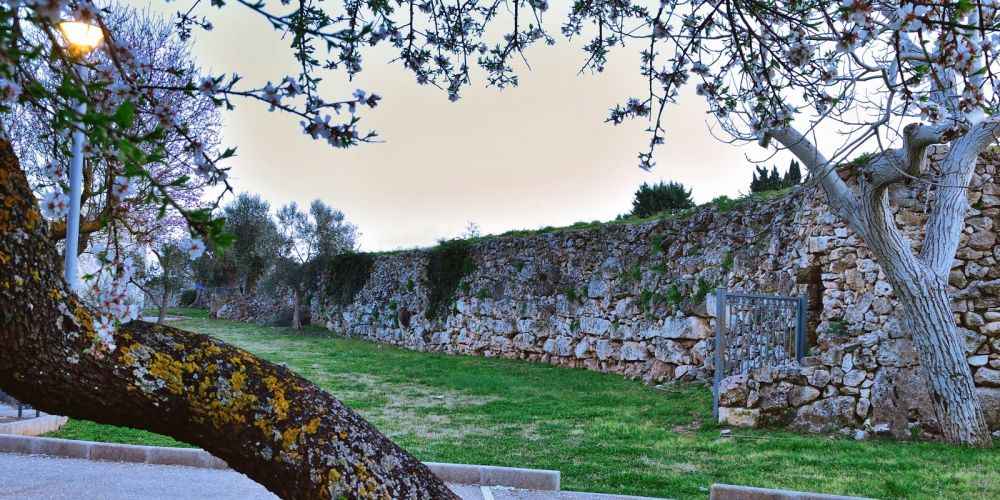
The megalithic walls (6th century BC) were 4 km long, 6 m high and wide and enclosed in their large circle, another one smaller around the Acropolis, that is, the highest and most sacred part of the city. Erected between the sixth and third centuries BC, they are now visible for some sections.
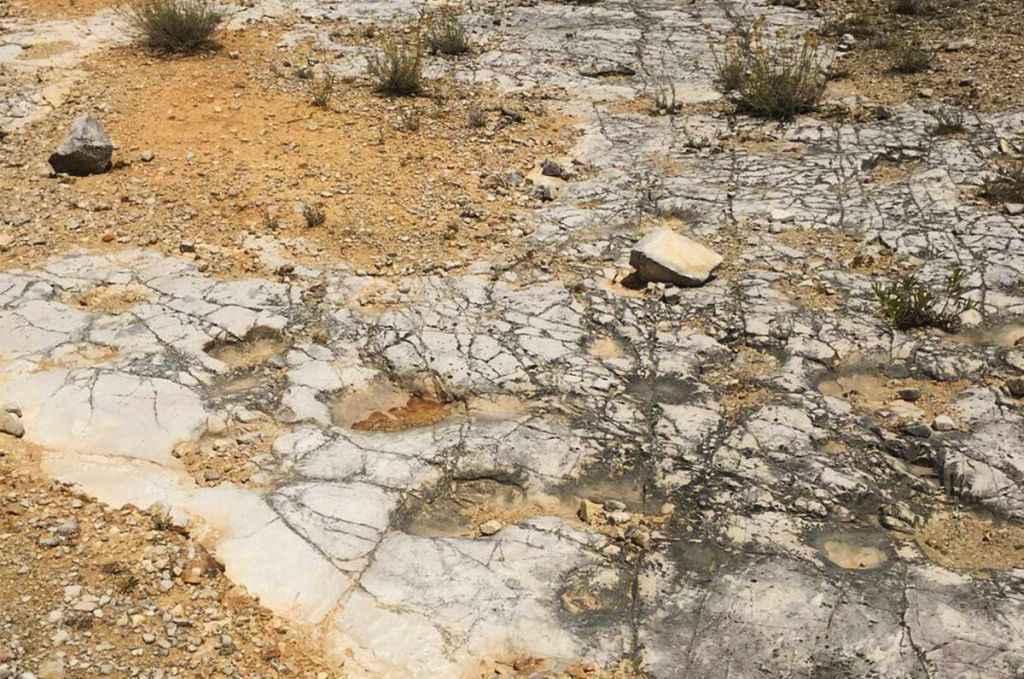
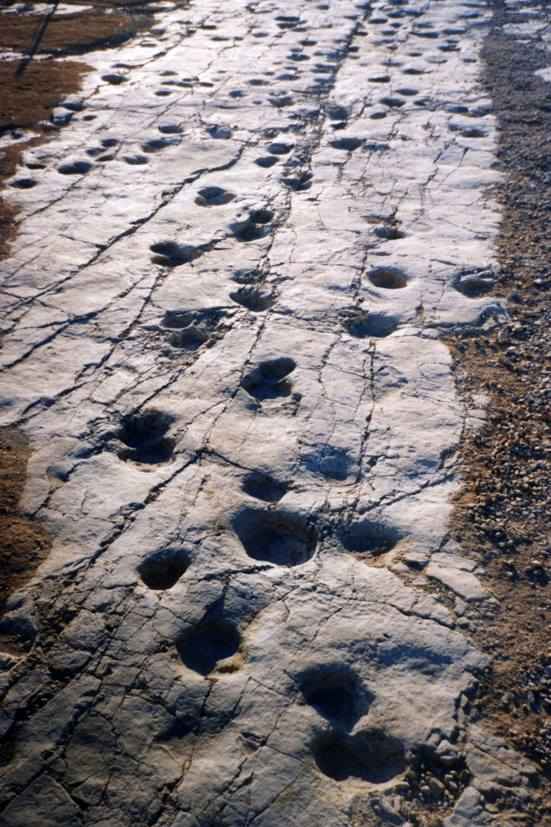 In Pontrelli, known as the dinosaur quarry, thirty thousand dinosaur footprints were found in 1999 on an area of 12000 square meters. The footprints date back to the Upper Cretaceous period, between 70 and 80 million years ago, with a tropical climate (hot and humid), attesting the presence of over two hundred animals, belonging to five different groups of dinosaurs, herbivores and carnivores.
In Pontrelli, known as the dinosaur quarry, thirty thousand dinosaur footprints were found in 1999 on an area of 12000 square meters. The footprints date back to the Upper Cretaceous period, between 70 and 80 million years ago, with a tropical climate (hot and humid), attesting the presence of over two hundred animals, belonging to five different groups of dinosaurs, herbivores and carnivores.
The dimensions of the footprints vary from 5 - 6 cm up to 40 - 45 cm, suggesting that they are faced with animals up to 10 meters high. The state of conservation of the footprints is probably due to the presence of a marshy ground with a muddy bottom, with algae carpets that allowed the cementing of the footprint. In some footprints the small wave of mud generated when the animal placed its paw on the ground, is visible. From the reading of the footprints and especially the tracks of a series of at least three consecutive footprints, or three hand-foot pairs in the case of quadruped animals, left by the same animal in movement, let us understand how normal the gaits were, without traces of panic, showing that the animals were grazing quietly in an allegedly lagoon environment.
From the quantity of the footprints and their size, it is easy to realize the truly large quantities of plants that had to be present on site in order to satisfy the survival of so many animals. One of the identified tracks belongs to a cerapod (herbivorous, quadruped, medium-sized dinosaur): it reveals an uncertainty in the course, perhaps a sudden change of pace, to avoid a sudden obstacle or change direction.
 In 1993 the man from Altamura was found in the cave of Lamalunga, remains of an intact human skeleton dating back to the Paleolithic. A good state of conservation was determined, especially of the skull, and this allowed to study the evolution and migration of the Neanderthalian man in the European territory. It is an adult male, about six feet tall, the skull has both archaic features and morphological transformations typical of the Neanderthalian populations; it belongs to the group of human fossils from the Middle European pleistocene. In 2015, La Sapienza University of Rome dated it between 128,000 and 187,000 years ago, making it one of the oldest Neanderthal finds. The study was published on Nature magazine and CNN.
In 1993 the man from Altamura was found in the cave of Lamalunga, remains of an intact human skeleton dating back to the Paleolithic. A good state of conservation was determined, especially of the skull, and this allowed to study the evolution and migration of the Neanderthalian man in the European territory. It is an adult male, about six feet tall, the skull has both archaic features and morphological transformations typical of the Neanderthalian populations; it belongs to the group of human fossils from the Middle European pleistocene. In 2015, La Sapienza University of Rome dated it between 128,000 and 187,000 years ago, making it one of the oldest Neanderthal finds. The study was published on Nature magazine and CNN.
Right after the discovery there was a talk to remove the Man from Altamura and the entire block of limestone concretions that enveloped him, to expose him to Rome. Vice versa, the "Sarastro" project by Prof. Vittorio Pesce Delfino, proposed and created a "tele fruition" of the find on site with terminals positioned in a closeby farm. After the removal of the expensive and somehow damaging equipment, for a long time nothing concrete was proposed in relation to more direct studies of the finding. In 2010 an interesting and complete study was published for the temporary removal of the skull and jaw only, to carry out precious laboratory tests; something perfectly achievable as the skull and jaw are almost devoid of adhesions to the stalactitic matrix.

The Pulo di Altamura is located in the Northern Murgia, near the Lamalunga Cave and looks like the largest Murgian sinkhole, about 550 meters wide and 95 meters deep. It has steep but grassy walls, with a narrow path that goes down to the bottom.
At the base of the Pulo there is a sinkhole (a point on the karst surface where water enters the subsoil). Due to their conformation, the sinkholes allow the presence of some particular conditions (protection from winds, low temperatures on the bottom, mineral-rich soils) allow a habitat that hosts unusual flora and fauna for the area (for example the royal crow). On a rocky wall there are some caves. Furthermore, the lithic artefacts found testify that the caves that open in the wall were inhabited in the Paleolithic.
The Pulo di Altamura is a pseudo-circular crater. The causes of the sinking are not known, but its formation was initially attributed to the sinking of the vault by emptying the karst rock below. No specific tests have been carried out on any origins due to the impact of celestial bodies (presence of nanodiamonds and iridium) but it is an impressive natural monument a few km from Altamura.
